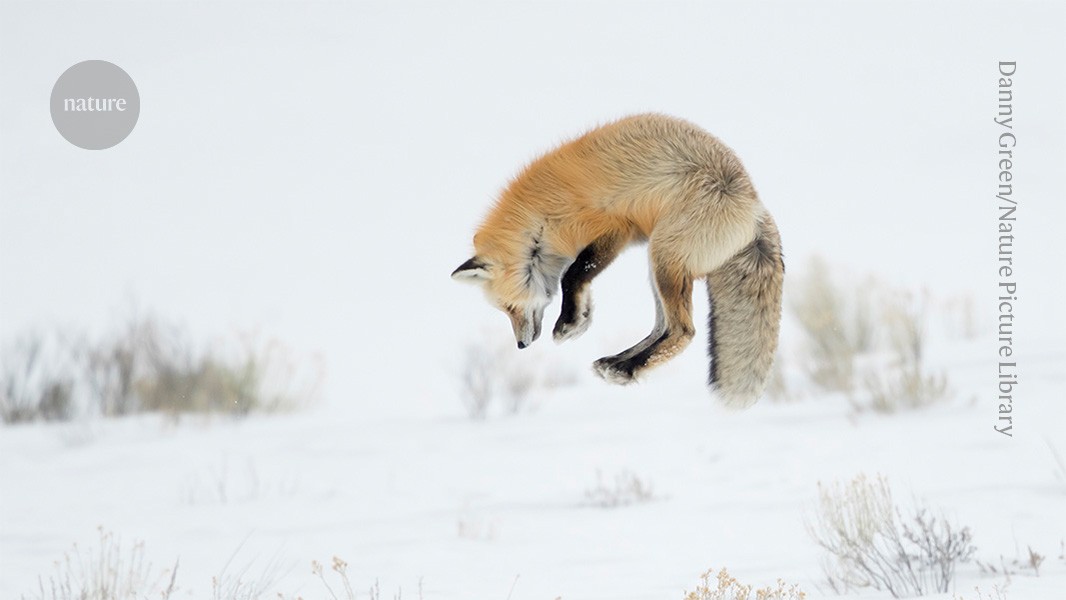How the Streamlined Skull Enables Foxes to Dive Headfirst into Snow to Hunt Prey
แนวคิดหลัก
The streamlined skull structure of red and Arctic foxes allows them to effectively dive headfirst into snow to catch rodents and other prey hidden beneath the surface.
บทคัดย่อ
The content describes how red foxes (Vulpes vulpes) and Arctic foxes (Vulpes lagopus) are able to thrive in snowy environments by utilizing a unique hunting technique. These foxes can detect the movement of rodents beneath the snow's surface and then leap into the air, diving head-first into the snow to catch their prey.
The key to this diving hunting strategy is the foxes' streamlined skull structure, which enables them to plunge into the snow without injury. This specialized adaptation allows the foxes to access a food source that is hidden from many other predators in the harsh, snowy landscape. By leveraging their acute hearing to locate prey and their physical capability to dive headfirst, the foxes are able to successfully hunt and survive in environments with limited visible food sources.
Streamlined skull helps foxes take a nosedive
สถิติ
Red foxes (Vulpes vulpes) and Arctic foxes (Vulpes lagopus) can hear rodents moving beneath the surface of the snow.
Foxes use a predatory strategy of leaping into the air and diving head first into snow to catch prey.
คำพูด
"A snowy landscape offers few promises of food at first glance. However, red foxes (Vulpes vulpes) and Arctic foxes (Vulpes lagopus) can thrive in this harsh environment."
ข้อมูลเชิงลึกที่สำคัญจาก
by Mary Abraham ที่ www.nature.com 05-03-2024
https://www.nature.com/articles/d41586-024-01267-2
สอบถามเพิ่มเติม
What other adaptations do foxes have that enable them to successfully hunt in snowy environments?
In addition to their streamlined skulls that aid in diving into snow to catch prey, foxes have several other adaptations that help them thrive in snowy environments. One key adaptation is their thick fur, which provides insulation against the cold and helps them blend into the snowy landscape for camouflage. Foxes also have keen senses of hearing and smell, allowing them to detect prey even beneath the snow. Their agile bodies and sharp claws enable them to navigate through the snow and catch fast-moving prey like rodents.
How do the hunting strategies of red foxes and Arctic foxes differ, and what factors contribute to these differences?
Red foxes and Arctic foxes have different hunting strategies based on their respective habitats and prey availability. Red foxes primarily rely on their agility and speed to chase down prey in a variety of environments, including snowy areas. They are known for their leaping and pouncing techniques to catch small mammals and birds. On the other hand, Arctic foxes have adapted to the harsh Arctic conditions by utilizing their keen sense of hearing to locate prey beneath the snow. They employ a more stealthy approach, patiently waiting and then diving headfirst into the snow to catch rodents. The differences in hunting strategies are influenced by the availability of prey, environmental conditions, and the specific adaptations of each fox species.
How might climate change and the melting of snow and ice impact the ability of foxes to utilize this diving hunting technique in the future?
Climate change and the melting of snow and ice could have significant impacts on the ability of foxes to utilize their diving hunting technique. As snow cover decreases and ice melts, the hunting grounds of foxes may shift, leading to changes in prey distribution and availability. This could disrupt the hunting patterns of foxes, making it more challenging for them to locate prey beneath the snow. Additionally, changes in snow cover may affect the camouflage and insulation provided by the snow, making it harder for foxes to blend in and stay warm during hunting. Ultimately, climate change could alter the dynamics of predator-prey relationships in snowy environments, potentially impacting the hunting success of foxes.
0
